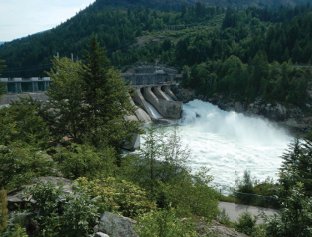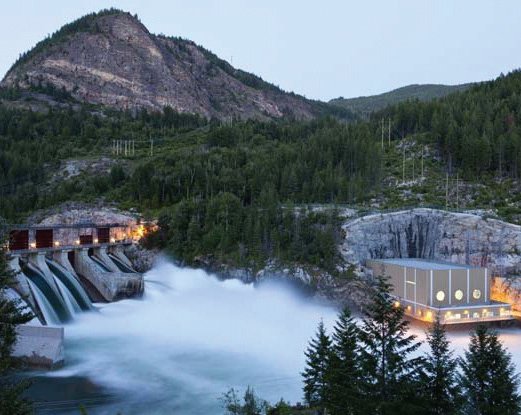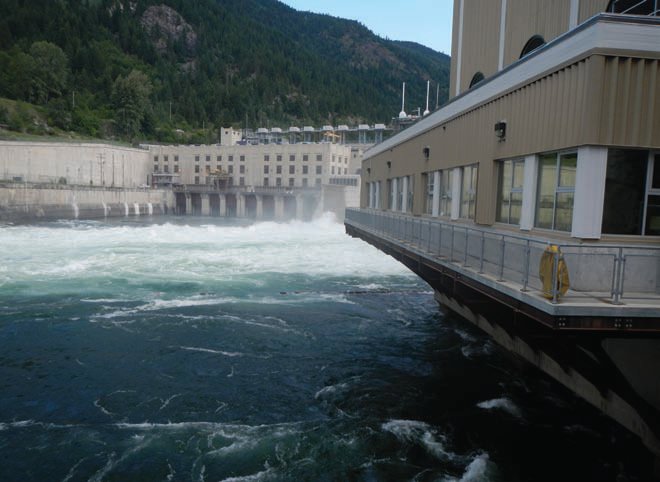Tensa protects dam
26 July 2016Australian lifting equipment supplier Tensa Equipment has won a contract to adapt its offshore lifting technology for use on a hydroelectric power station crane on the Kootenay River in Canada.
Columbia Power Corporation, a crown corporation wholly owned and controlled by the Province of British Columbia, is installing an adapted version of Tensa Equipment’s 60t SWL Dynamic Load Reducer (DLR).
DLR has been previously used to absorb the shock holdings when lowering large objects through the splash zone in the offshore oil and gas industry.
Columbia Power will use the equipment to reduce shock loads on a crane lifting equipment from the surging turbulence below the spillway of the Brilliant hydroelectric power station dam.
Tensa owner Derick Markwell said: “The vast volumes of water from the melting snowfields that feed the Kootenay River often generate waves up to three metres below the spillway near the turbine outlet of the plant. Installing the isolation barrier into the water to allow maintenance of the turbine is a challenge in these conditions.” According to Tensa, Columbia Power looked at a number of ways to solve this problem before choosing the DLR.
“The traditional way of providing a concrete barrier would have been very expensive, caused significant downtime and would have required very detailed management plans to ensure the impact on threatened species such as the white sturgeon was minimised,” the company wrote.
Tensa said it was able to demonstrate by simulation that it could model the behaviour of the system. In addition, Columbia Power by using a nitrogen gas spring will make sure it preserves the natural environment of the river.
Markwell said the project was “challenging” for Tensa because the water loading is different to a traditional wave load: “It is a bore of water that hits a wall behind the load and is reflected in a sudden upsurge. Once we adjusted our analysis equations to model this, we were able to generate loads very similar to what had been reported,” he added.
Tensa adjusted the stiffness, preload and damping of its DLR device until its simulation software illustrated they had achieved the desirable solution.
Markwell explained: “We ended up with a solution that could lift the complete range of loads and achieve a satisfactory performance without having to adjust any precharge pressures or other parameters. We also limited the length and extension of the unit so that the loads could be lifted using the existing lifting frames.”


